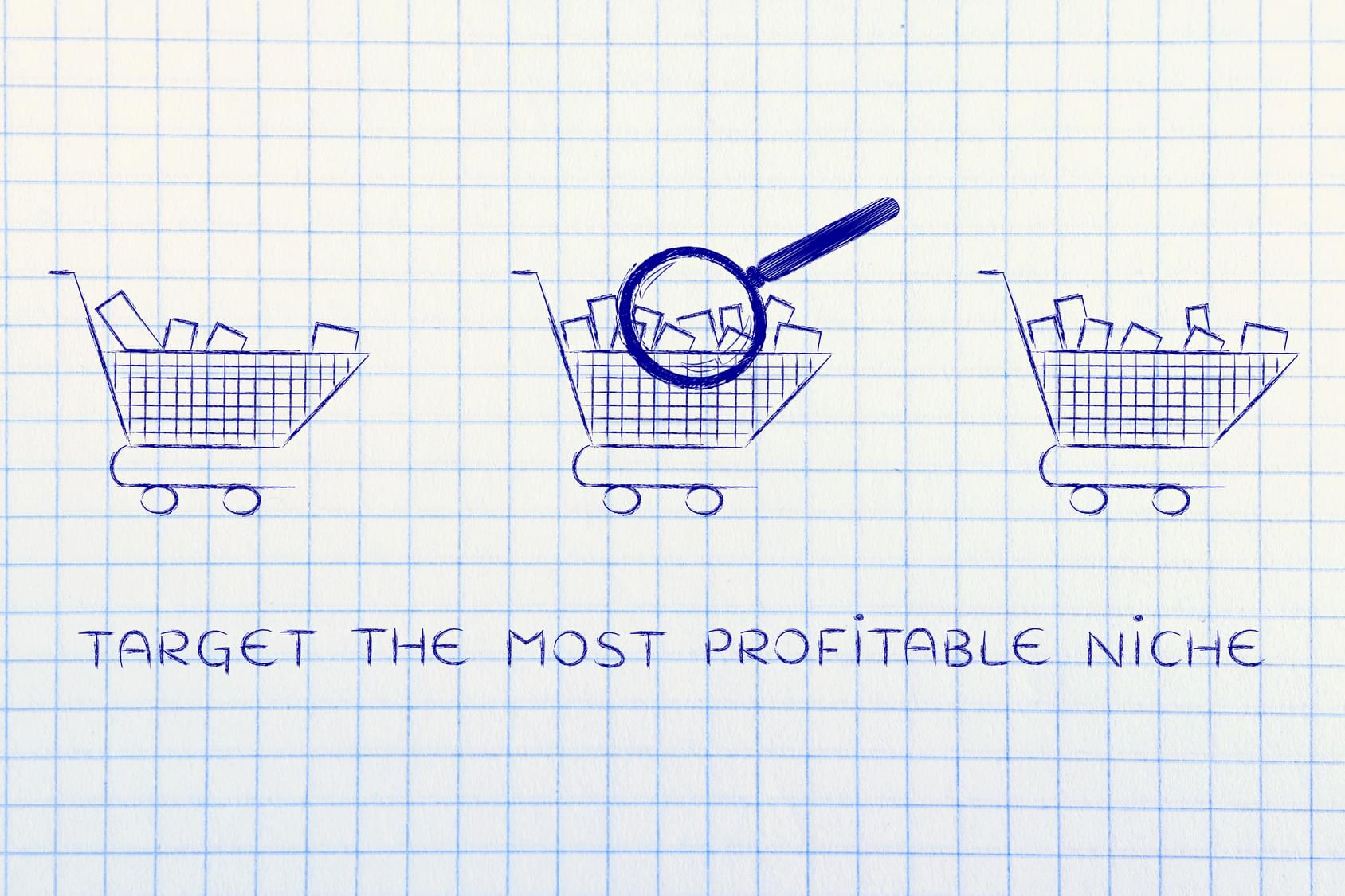Dust off your smarketing personas, because we’re getting back to basics. Well, kinda, because customer segmentation is generally considered an “advanced” marketing technique, but it’s so effective (and easy to do!) that really it should be a basic tool in your smarketer’s toolkit.
Once you have marketing personas or actual customers that you’re selling to, you can start customer segmentation. And sure, it sounds scary, but it’s not as complicated as it seems. And boy, is it worth it. According to a 2017 Mailchimp survey:
- Segmented campaigns have a 14 percent higher open rate on average than non-segmented campaigns
- Campaigns segmented on customer interest have a 74 percent higher click rate on average than non-segmented campaigns
And according to Campaign Monitor, smaller segments, more targeted content, and carefully chosen subject lines make for high average benchmarks:
- Average open rates of 17.92 percent
- Average click through rate of 2.69 percent
- Average open to click rate of 14.1 percent
With those positive numbers, your team can’t afford to blast emails to your entire customer base anymore. That’s why we’ve brought together the latest email list segmentation models and techniques, plus some real-life examples of email cadences you can send to a customer segment to get you started.
Basic Customer List Segmentation Methods
Customer segmentation divides your email lists into groups based on common features that tend to predict buying habits, such as demographics or interests, in order to better serve the customer. This is called a priori segmentation– a priori is Latin for from the former, and basically means that you’ve deducted these segments based on anecdotal knowledge or observed trends in your marketing efforts. Here are some a priori segments you can use:
- Demographics: much of this is publicly-available data that can be gained from your customers during the check-out phase for that first purchase or through other (non-invasive) means: location, age, gender, life stage, marital status. Pro Tip: Facebook and other social media platforms often have much of this information stored on users and can help you build custom audiences for ad outreach.
- Decision-making status: especially useful for B2B companies, knowing a customer’s job title can make the difference between barking up the wrong tree and making a sale quickly. But decision-making status also works for B2C companies. If you’re trying to sell children’s products, for example, you’ll need to target those with the expendable income (the parents).
- Customer history w/ company: know how long each customer has used your product or followed your brand, which can tell you the most loyal customers, how they’ve seen you change, and maybe how they’ll react to new changes.
- Personal interactions with customers: Your support team can help you designate your power users, advocates, and even your difficult tickets. These groups are perfect test segments to start your experiments.
Once you’ve identified customer groups, you’ll want to export or combine those groups into a useable form. Most companies make a list of email addresses that they can use to run an automated email cadence in their email marketing or marketing automation tool. You can also use this list to target on social media, via direct mail, a call cadence, or any other marketing tool you might use. For the sake of simplicity, we’ll use a segmented email list as a reference point.
Pro Tip: It’s important to make sure that your segmented lists are big enough or potentially lucrative enough to be worth your while. Segments that are smaller than 10 percent of your total customer base might not be worthwhile to plan an entire set of content for, unless they are your 10 percent highest volume purchasers — in that case they should be rewarded, and your special attention may be rewarded in even higher customer lifetime value. To put it another way: you’re making a whole new marketing campaign for this group, so start off with your high-ROI groups.
Techniques for making segmented customer lists
Research your possible customer segments first. When you start collecting and looking at the data on customers in general, you’ll find group divisions will start to rise to the surface. Those divisions–while probably not well-defined at this point–can help you start to group your customers together. To get started, think about where you store data about your customers.
Mine your CRM
Your demographic data, decision-making status, and a lot of your customer history can be found right in your customer relationship management tool — if your team has been using it correctly. If you’re not able to pull complete customer records by age, location, or another demographic piece, it might be time to do a little CRM data cleanse.
Pull example customer lists from these fields in your CRM. Remember, you know your customers best, so these are example ideas, not a full list. Feel free to jump on any segments you find that fit your particular customers.
B2B segments
- Company location
- Job title
- Lead status
- Vendors
- Partners
- Industry verticals
- Estimated customer lifetime value
B2C segments
- Age
- Location (by zip code, state, country)
- Language
- Recent purchases
- Gender (although this can be an unreliable signal/segment)
- Estimated customer lifetime value
Try marketing automation and email tools for more advanced customer segments
Marketing automation tools often have built-in email segmentation tools that divide your lists based on customer interactions with emails and content you’ve sent them, product interests (if your MA is connected to your ecommerce tool, inventory management tool, or ERP), and interaction with forms and pages on your website. Because marketing automation and CRM tools have a Venn diagram of overlapping capabilities, you may also use some of the segments you looked for in your CRM here as well.
Try segmenting based on this data from your marketing automation or email marketing tool:
- Highly engaged customers who engage with your emails/content
- Customers who respond to coupons/promotional content
- Customers who view and interact with your content on mobile, desktop, or tablet
- Leads by lead score, or funnel stage
- Leads by last content type or product they engaged with (downloads, blog post, social media post)
Whew! Once you’re done pulling the segment, you’re ready to get started building your campaign. You’ll also want to upload that list of customer emails into your marketing automation or email marketing tool so they’re loaded and waiting for when you’re ready to pull the trigger on your campaign.
What to do with segmented customer lists?
Divide & Conquer
Pull a test segment of customers from your vast stores of data and plan 3-10 weeks of content for these customers. Send them special emails with content that speaks directly to this group. Place offers and content (articles, videos, blog posts, images) targeted to this audience on the social media channels where they spend their time.
Possible B2B content cadence:
Scenario: B2B software company needs beta testers for new feature.
Target: power users who use current software 3-5 days a week.
Content Type / Email |
Call to Action |
| Week 1: we want your feedback–email with brief description of beta feature | sign up now for early access |
| Week 2: outline problem(s) the beta feature will solve, white paper about the feature’s ability to solve those problems | sign up for early access |
| Week 3: Get a first look. PDF, gated video, or other downloadable asset with screenshots and walkthroughs of the product | sign up for access to the beta test |
| Week 4: Beta access now open: go check it out for yourself | sign up here to access the new feature |
| Week 5: People are talking: quotes/video feedback/reviews of the new feature | see what you’re missing |
Possible B2C content cadence:
Scenario: Introducing new product line of college-ready dorm and beyond decorations
Target: College-aged students and their parents doing back to school shopping (age targeting) and those who have interacted with similar home decoration styles in the past.
Content Type/ Email |
Call to Action |
| Week 1: Back to school is almost here, get started in style (image of decorations in styled room) | shop the style–landing page should be new product collection |
| Week 2: Style + Organization: how to best use a small small space, blog post or PDF download with tips and tricks for making the most of a dorm room. | download your organizational guide now. |
| Week 3: Dorm essentials checklist– these are all the things you need for your room (including some more practical decorations on product line) | Get your essentials now–landing page is blog post with links to both well-known essentials + new product collection with lots of images |
Analyze
Let your test run–literally set it and forget it. Yes, even the beta test–you can always do another push to sign up users. You’re testing, so barring some sort of mass customer exodus of specifically the customers on this list, you can just sit back and wait for the test to run. When it’s finished, analyze the content that works, the content that customers ignore, and even the content that makes them unsubscribe.
Ask these questions:
- What content received the most in-email clicks?
- What content did customers ignore?
- What email subject lines got the most opens?
- Which products have sold the best due to the campaign?
- When did customers unsubscribe? (it’s helpful to take a customer survey at your unsubscribe page asking why the customer asked to be removed from the list to give you a little more data here)
Iterate
Take what you learned from that group and apply it to your next test. If your test performed really well, how can you build a second group to test alongside it? If it didn’t perform well, what reasons can you find for the failure, and how can you fix those weak spots?
Your team can also set up A/B test groups within your segments if they’re large enough. Try testing a couple of different subject lines on 10 percent of your segment, and choose the one with the most opens as the subject line you use on the other 90 percent of your segment.
Keep it going
How can you continue to provide content to the audience segments that work? Don’t leave them in the dark after your test. Instead, use what you know to define content, products, and offerings for the future. These days, marketing is all about devising and running tests to see what works best, so make customer segmentation and content testing a consistent part of your strategy for better ROI.
***
Ready to get started with customer segmentation? Check out our software category pages for customer relationship management software and marketing automation systems, or call one of our Technology Advisors today for a free, 5-minute tech assessment. We’ve got reviews and recommendations of the best software available to help you get faster ROI.





